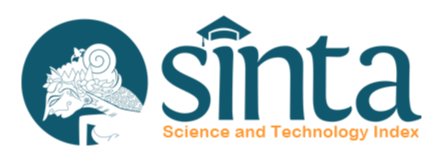Hubungan antara Lingkungan Fisik dengan Kelelahan Kerja Pegawai Produksi di Pabrik Tahu Sutera Galih Dabeda
DOI:
https://doi.org/10.12928/dpphj.v14i1.1805Keywords:
fKeywords, fatigue, nutritional status, heat stress, noise, lightingAbstract
Background: Fatigue is a workplace accident that decreased efficiency and endurance at work. This study aims to determine the factors that influence work fatigue in tofu production workers at the Galih Dabeda Silk Tofu Factory Kampung Cibuntu Bandung. Method: The research was cross sectional design and sample in the form of total sampling with a total of 80 employees. Data collection is done through interviews and direct measurements. Data analysis was performed univariately and bivariately with chi square test and the magnitude of the relationship (OR). Results: Factors related to work fatigue are noise (p-value 0,0001) and lighting (p-value 0,0001), but heat stress (p-value 0.532; OR 1.045 95%; 0.987- 1,112) did not correlate with fatigue. Conclusion: The conclusion that can be drawn from this study is the noise and lighting associated with the occurrence of work fatigue in employees in the factory know, while the heat pressure is not proven to be associated with work fatigue. Suggestions that can be recommended are to provide alternating hours of rest for 30-60 minutes to employees, use personal protective equipment as needed and drink water at least 8-10 glasses a day or 160 - 200 ml of water in one day according to their respective needs the worker.
References
2. Djayanti S. Kajian Penerapan Produksi Bersih di Industri Tahu di Desa Jimbaran, Bandungan, Jawa Tengah. Jurnal Riset Teknologi Pencegahan Pencemaran Industri. 2015;6(2):75–80.
3. Oktavia DA, Dwiyanti E. Hubungan Iklim Kerja Fisik dengan Kelelahan Subyektif di Pabrik Tahu CV. Budi Sari Jaya Sidoarjo. Jurnal Penelitian Kesehatan. 2016;14(3):166–171.
4. Ningsih SNP. Factors Relating To Work Fatigue in Locomotive Dipo Workers PT. Kereta Api Indonesia (Persero). Journal of Industrial Hygiene and Occupational Health. 2018;3(1):69-82.
5. Atiqoh J, Wahyuni I, Lestantyo D. Faktor-Faktor yang Berhubungan dengan Kelelahan Kerja pada Pekerja Konveksi Bagian Penjahitan di CV. Aneka Garment Gunungpati Semarang. Jurnal Kesehatan Masyarakat. 2014;2(2):119–126.
6. Deyulmar BA, Suroto, Wahyuni I. Analisis Faktor-faktor yang Berhubungan dengan Kelelahan Kerja pada Pekerja Pembuat Kerupuk Opak di Desa Ngadikerso,Kabuoaten Semarang. Jurnal Kesehatan Masyarakat. 2018;6(4):279–285.
7. Oktavia AD, Dwiyanti E. Hubungan Iklim Kerja Fisik dengan Kelelahan Kerja Subjektif di Pabrik Tahu CV. Budi Sari Jaya Sidoharjo. Jurnal Penelitan Kesehatan. 2016;14(3):166–171.
8. Setyawati L. Selintas tentang Kelelahan Kerja, Manajemen Kelelahan Kerja dan Jawabannya. Yogyakarta: Amara Books; 2010.
9. Erliana CI, Irwansyah D, Abdullah D, Zarlis M. Analisis Pengukuran Beban Kerja Supervisor dan Firemen PT Perta Arun Gas menggunakan Metode Defence Research Agency Workload Scale. Industrial Engineering Journal. 2019;8(2):47–52.
10. Verawati L. Hubungan Tingkat Kelelahan Subjektif dengan Produktivitas pada Tenaga Kerja Bagian Pengemasan di CV Sumber Barokah. The Indonesian Journal of Occupational Safety and Health. 2017;5(1):51-60.
11. Perwitasari D, Tualeka AR. Faktor yang Berhubungan dengan Kelelahan Kerja Subjektif Pada Perawat di RSUD DR. Mohommad Soewandhi Surabaya. The Indonesian Journal of Occupational Safety and Health. 2017;6(3): 365-373.
12. Kusgiyanto W, Suroto, Ekawati. Analisis Hubungan Beban Kerja Fisik, Masa Kerja, Usia dan Jenis Kelamin terhadap Tingkat Kelelahan Kerja pada Pekerja bagian Pembuatan Kulit Lumpia di Kelurahan Kranggan Kecamatan Semarang Tengah. Jurnal Kesehatan Masyarakat. 2017;5(5):413–423.
13. Andriani KW. Hubungan Umur, Kebisingan dan Temperatur Udara dengan Kelelahan Subjektif Individu di PT X Jakarta. The Indonesian Journal of Occupational Safety and Health. 2016;5(2):112–120.
14. Suma’mur. Higiene Perusahaan dan Kesehatan Kerja (HIPERKES). Jakarta: Sagung Seto; 2009.
15. Wiyanti N, Martiana T. Hubungan Intensitas Penerangan dengan Kelelahan Mata pada Pengrajin Batik Tulis. The Indonesian Journal of Occupational Safety and Health. 2015;4(2):144–154.
Downloads
Published
Issue
Section
License
Authors transfer the copyright and grant the Disease Prevention and Public Health Journal right of first publication with the work simultaneously licensed under a Creative Commons Attribution License (CC BY-SA 4.0) that allows others to share (copy and redistribute the material in any medium or format) and adapt (remix, transform, and build upon the material) the work for any purpose, even commercially with an acknowledgement of the work's authorship and initial publication in Disease Prevention and Public Health Journal. Authors are able to enter into separate, additional contractual arrangements for the non-exclusive distribution of the journal's published version of the work (e.g., post it to an institutional repository or publish it in a book), with an acknowledgement of its initial publication in Disease Prevention and Public Health Journal. Authors are permitted and encouraged to post their work online (e.g., in institutional repositories or on their website) prior to and during the submission process, as it can lead to productive exchanges, as well as earlier and greater citation of published work (See The Effect of Open Access).

This work is licensed under a Creative Commons Attribution-ShareAlike 4.0 International License.







